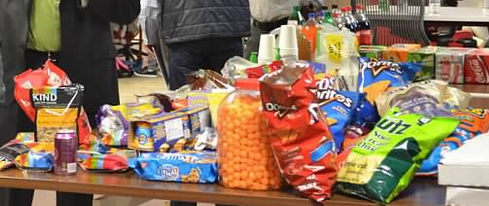By Mark Reddish
If you’d seen the empty case of Red Bull, you’d believe me when I say that writing code can be extreme. On May 2-3, I experienced my first app hackathon, an event that was hosted by AT&T and held at 1776 in Washington, D.C. The 24 hour-long competition drew over one hundred participants, including public safety professionals who were invited by APCO to lend their considerable knowledge to help the developers understand what kinds of apps would benefit public safety. The collaborations yielded 15 new conceptual apps for public safety. In this post, I’d like to highlight a couple of the winning apps and describe how this event fits into the bigger picture of APCO’s work with public safety apps.
The hackathon began with a set of app Challenges that were associated with a particular subset of public safety use cases. For example, the APCO Location Challenge asked developers to create apps that provide location information to first responders in the field or help PSAPs receive information to improve emergency response. The winners of this challenge, who also won 2nd place overall, created an app called Beckon that leverages GPS and Bluetooth signals to guide first responders to victims and provide patient- and location-specific data as responders approach the scene. As APCO, the Federal Communications Commission, and other stakeholders address 9-1-1 location accuracy requirements in a current regulatory proceeding, it was exciting to see an elegant model of how new technology can help emergency responders zero-in on wireless callers in need of assistance.
APCO Location Challenge Winner – Team Beckon

Another notable use of new technology was an app called Glass of Life. This app used Google Glass to display schematics of hybrid automobiles for first responders using the Jaws of Life. Speaking the vehicle make and model brings up schematics that illustrate hazards to avoid during the extrication, including high voltage lines, battery banks, and airbags. The app also allows users to check the statuses of local hospitals. Imagine you’re trying to coordinate receiving facilities for multiple patients. By speaking the name of a hospital, you’re presented with a color-coded display on the Glass screen that indicates conditions such as whether the hospital is clear, out of cardiac monitors, out of ER beds, or on trauma bypass.
In addition to using cutting edge technology for their apps, the developers excelled because they took advantage of the public safety practitioners who were at the hackathon to serve as mentors. Collectively representing decades of experience in emergency response, these public safety practitioners helped the developers understand how law enforcement, fire/rescue, and 9-1-1 centers operate. For example, Team Beckon revised their plan after trying on a firefighter’s turnout gear and gloves, which showed them the difficulty firefighters would have with using a smartphone. The idea for Glass of Life arose from a firefighter’s description of the scene of a high-priority auto extrication with multiple trauma patients. Simply put, the developers who sought advice from public safety practitioners built better apps.
Firefighter Steve Birnbaum educates a developer:

The benefit of practitioner input came as no surprise, but it was a timely reminder of the importance of connecting developers with practitioners. Just a week before the hackathon, APCO celebrated the one-year anniversary of AppComm.

As the only website devoted to public safety apps, AppComm facilitates collaboration between developers, the general public, and public safety professionals with the goal of making apps more effective. A recurring theme throughout our app-related panels and discussions at APCO events, comments on AppComm, and interactions during the hackathon is that developers are eager to learn about emergency response from the experts. They want their apps to make a difference. By taking advantage of opportunities to influence app development, public safety practitioners can ensure the creation of effective apps tailored to the community’s unique needs.
If you’re interested in public safety apps, consider joining an informal AppComm group to contribute to APCO’s efforts. Contact [email protected]. We’re looking for a diverse set of volunteers; no particular expertise is required. When practitioners connect with developers, great things can happen for public safety.
For more about the hackathon, including app descriptions and the full list of winners, check out AT&T’s blog.
Hackathon Sustenance:
